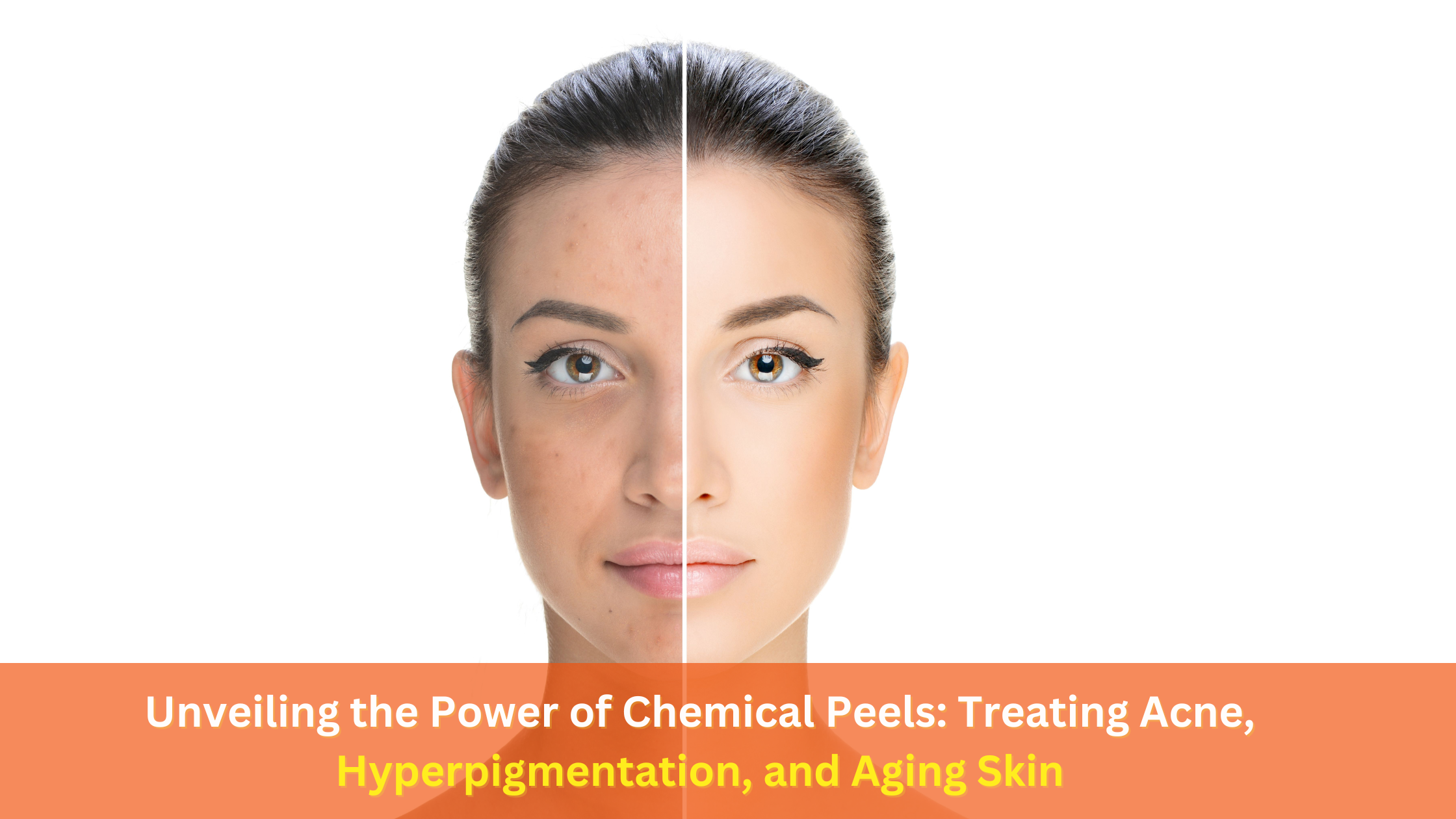Chemical peels have been used for centuries as a popular dermatological treatment to improve the appearance and texture of the skin. Over time, advancements in the field of dermatology have led to the development of various types of chemical peels that target specific skin conditions. In this blog, we will delve into the use of chemical peels for treating common skin concerns like acne, hyperpigmentation, and aging skin.
Understanding Chemical Peels
Chemical peels involve the application of a chemical solution to the skin, which causes controlled exfoliation and removal of the outer layers. This process stimulates the growth of new, healthy skin cells, resulting in a refreshed and rejuvenated appearance. Chemical peels are categorized into three main types based on their depth of penetration: superficial, medium, and deep peels. The depth of the peel determines the extent of skin improvement and the recovery time involved.
Treating Acne with Chemical Peels
Acne is a common skin condition that affects individuals of all ages. Chemical peels can be an effective treatment option for acne-prone skin. Superficial peels, such as those containing alpha hydroxy acids (AHAs) or beta hydroxy acids (BHAs), can help unclog pores, reduce oiliness, and exfoliate the skin’s surface. These peels also have anti-inflammatory properties, which can aid in calming existing acne lesions.
Medium-depth peels, like those containing trichloroacetic acid (TCA), penetrate deeper into the skin and can effectively target acne scars and hyperpigmentation caused by acne. By stimulating collagen production, medium-depth peels can help improve the texture of the skin and reduce the appearance of acne scars over time.
Hyperpigmentation and Chemical Peels
Hyperpigmentation refers to areas of the skin that appear darker than the surrounding skin due to excess melanin production. It can be caused by various factors, including sun exposure, hormonal changes, and acne. Chemical peels, particularly those containing TCA or glycolic acid, can help lighten hyperpigmented areas by exfoliating the top layers of the skin and promoting cell turnover.
Medium-depth peels are often recommended for treating hyperpigmentation. These peels not only target the excess pigmentation but also encourage the growth of new, evenly-pigmented skin cells. By gradually reducing the appearance of dark spots and patches, chemical peels can help restore a more balanced and radiant complexion.
Addressing Aging Skin with Chemical Peels
Aging skin is characterized by fine lines, wrinkles, uneven texture, and loss of elasticity. Chemical peels offer a non-invasive approach to address these concerns and rejuvenate the skin. Superficial peels containing AHAs, such as glycolic acid, can help improve skin texture, promote collagen production, and reduce the appearance of fine lines and surface wrinkles.
Deeper peels, like those using phenol or high-concentration TCA, can provide more significant results by targeting deep wrinkles, scars, and sun damage. These peels stimulate collagen remodeling, resulting in tighter and smoother skin. However, it is important to note that deep peels typically require longer recovery periods and should be performed by experienced professionals.
The Role of IICAN in Promoting Safe Practices
The Indian Institute of Cosmetology Aesthetics and Nutrition (IICAN.) is an Institute dedicated to promoting safe and ethical practices in the field of aesthetic medicine. It aims to provide education and training to professionals to ensure that they have the necessary knowledge and skills to perform cosmetic procedures, including chemical peels, safely and effectively. The IICAN emphasizes the importance of understanding different skin types, assessing patient suitability for specific treatments, and following proper protocols to minimize risks and maximize positive outcomes.
Through its comprehensive training programs, the IICAN equips healthcare professionals with the latest advancements in the field of aesthetic medicine, including the use of chemical peels. These programs cover various aspects such as the science behind chemical peels, patient assessment and consultation, selecting the appropriate peel for specific skin conditions, and post-treatment care.
Summary
Chemical peels offer a versatile and effective solution for treating specific skin conditions such as acne, hyperpigmentation, and aging skin. The advancements in the field of dermatology have allowed for the development of various types of chemical peels that can be tailored to individual needs. However, it is crucial to seek treatment from trained professionals who adhere to safe practices.
The Indian Institute of Cosmetology Aesthetics and Nutrition (IICAN.) plays a significant role in promoting safe and ethical practices in the field of aesthetic medicine, including the use of chemical peels. By providing education, training, and up-to-date knowledge, IICAN. ensures that professionals are equipped with the skills and understanding necessary to deliver high-quality care to their patients. If you are considering chemical peel treatments, it is advisable to consult with a qualified professional associated with IICAN. to ensure a safe and successful experience.
For more information about the Indian Institute of Cosmetology Aesthetics and Nutrition (IICAN), you can visit their official website at https://www.iican.in/.

